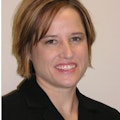Did you read our last Staff Issues column in Dental Economics titled, “The end of the annual performance review”? Did it make you feel good and nervous at the same time? The article proposed giving up the age-old annual performance review (that’s the feel-good part). Instead, it proposed putting goal setting at the forefront of your performance management going forward (that’s the nervous part). While the shift to focusing on goals may seem daunting, it is worth it and easier than you may think.
Why goals?
The simple answer to “why goals?” is, to gain employee engagement. You can’t be a practice manager without being concerned about employee engagement.
In its research, the Gallup group created the Q12 Survey. Gallup “conducted decades of research—writing, testing, and refining thousands of question items to find the ones that would best measure employee engagement. In 1996, Gallup finalized the 12 question items that consistently and powerfully link to practice outcomes, including profitability, employee retention, productivity, safety records, and customer engagement.”1
What was number one on the list? It was, “I know what is expected of me at work.” This would seem to be a fundamental component to high performance and employee engagement. Goals, among other methods of communication about expectations, such as job descriptions, can be a good way to create that experience for employees.
Creating goals
As the manager, owner, and employer of the practice, creating goals begins with you. You must know where you want your practice to go in order to determine the best way to get there. Therefore, you need to carefully analyze your practice to determine what needs to be improved.
Once that’s accomplished, you must tie your overall practice goals to individual employee goals at each level of the practice. This is commonly referred to as “cascading goals,” a process that integrates goal-setting activities at all organizational levels while pointing to the goals outlined at the highest level. As goals cascade downward, they become more narrowly focused to allow for specific objectives to be defined.
You want everyone, in their own way, to work toward achieving the goals you’ve established at the executive level. For example, if your goal is to increase business by 10%, what specific things can each employee do or accomplish to make that goal a reality?
Writing goals
How you write and communicate goals can be critical to whether or not they will be achieved. A goal that is misunderstood will not be effective, and an overly ambitious goal will hinder motivation. It’s important that the goals be SMART—specific, measurable, attainable, relevant, and time bound.
Becoming comfortable with establishing SMART goals will take some practice. For simplification, think of SMART goals as specifying who, what, where, when, and why, as well as creating shared understanding and expectations.
Pitfalls to avoid
- Consider an employee’s total set of goals. While each individual goal may be achievable, you may be assigning an employee more goals than he or she can reasonably be expected to successfully complete.
- Don’t create a situation in which safety, ethics, or morals could be compromised to achieve a goal. Be sure that employees know you don’t want them to take shortcuts (cheat), which can be dangerous, to achieve goals.
- Don’t create goals that are so narrowly defined that employees miss the bigger picture.
- While goals should be time bound, don’t make the timeline inappropriately short. Short-term goals encourage short-term thinking.
- Think about whether a goal will influence risk taking. Define acceptable levels of risk. You don’t want employees to take too much risk and put the organization or themselves in harm’s way.
Conclusion
The process of creating and writing goals to increase performance management is a shift worth taking.But, poorly written goals will not help your organization or employees get better. They will hinder performance on all levels, not to mention be potentially damaging along the way. Start slowly in this process and see how it goes. Ask for feedback from your employees, learn from your mistakes, and enhance your process before proceeding too far.
REFERENCE
1. How were Gallup’s Q12 survey questions developed? Q12Gallup website. https://q12.gallup.com/help/en-us/Answers/164468. Accessed September 29, 2017.
Tim Twigg is the president of Bent Ericksen & Associates and Rebecca Boartfield is an HR compliance consultant. For more than 30 years, the company has been a leading authority in human resources and personnel issues, helping dentists successfully deal with ever-changing and complex labor laws. To receive a complimentary copy of the company’s quarterly newsletter or to learn more, call (800) 679-2760 or visit bentericksen.com.
About the Author

Rebecca Boartfield, SHRM-SCP
Rebecca Boartfield, SHRM-SCP, is an HR compliance consultant for Bent Ericksen & Associates. For more than 40 years, the company has been a leading authority in human resources and personnel issues, helping dentists successfully deal with ever-changing and complex labor laws. To learn more, call (800) 679-2760 or visit bentericksen.com.


